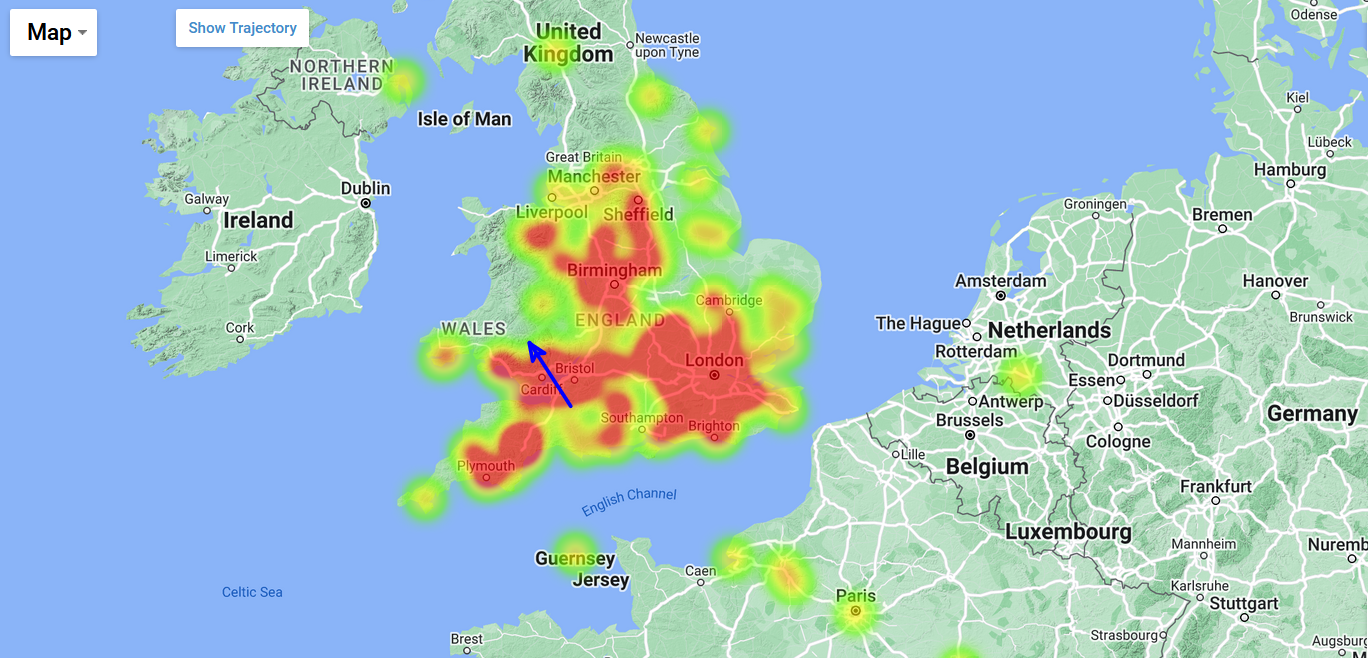
At 23:40 Universal Time on Wednesday evening 11 May 2022, a brilliant fireball shot from south east toward the northwest over the southern United Kingdom. Although it occurred over the United Kingdom, it could be see as far away as France and the Netherlands. The preliminary trajectory, computed from the 500 reports received so far indicates this fireball shot between the cities of Cardiff, Wales and Bristol, England and terminated over southern Wales. There have been no reports of sounds from this fireball so it is doubtful that any fragments survived all the way to the ground.
If you witnessed this event and/or if you have a video or a photo of this event, please
Submit an Official Fireball Report
If you want to learn more about Fireballs: read our Fireball FAQ.
Photos and Videos
Below are displayed a few pictures from FRIPON video network and videos captured by public. Please share attention to the bright static spot in the sky: it’s the Moon, allowing a fast comparison of the fireball brightness, which must have been close to magnitude -12 !
Fireball, Bolide?
Several thousand meteors of fireball magnitude occur in the Earth’s atmosphere each day. The vast majority of these, however, occur over the oceans and uninhabited regions, and a good many are masked by daylight. Those that occur at night also stand little chance of being detected due to the relatively low numbers of persons out to notice them.
Additionally, the brighter the fireball, the more rare is the event. As a general thumb rule, there are only about 1/3 as many fireballs present for each successively brighter magnitude class, following an exponential decrease. Experienced observers can expect to see only about one fireball of magnitude -6 (crescent moon) or better for every 200 hours of meteor observing, while a fireball of magnitude -4 (Venus) can be expected about once every 20 hours or so.
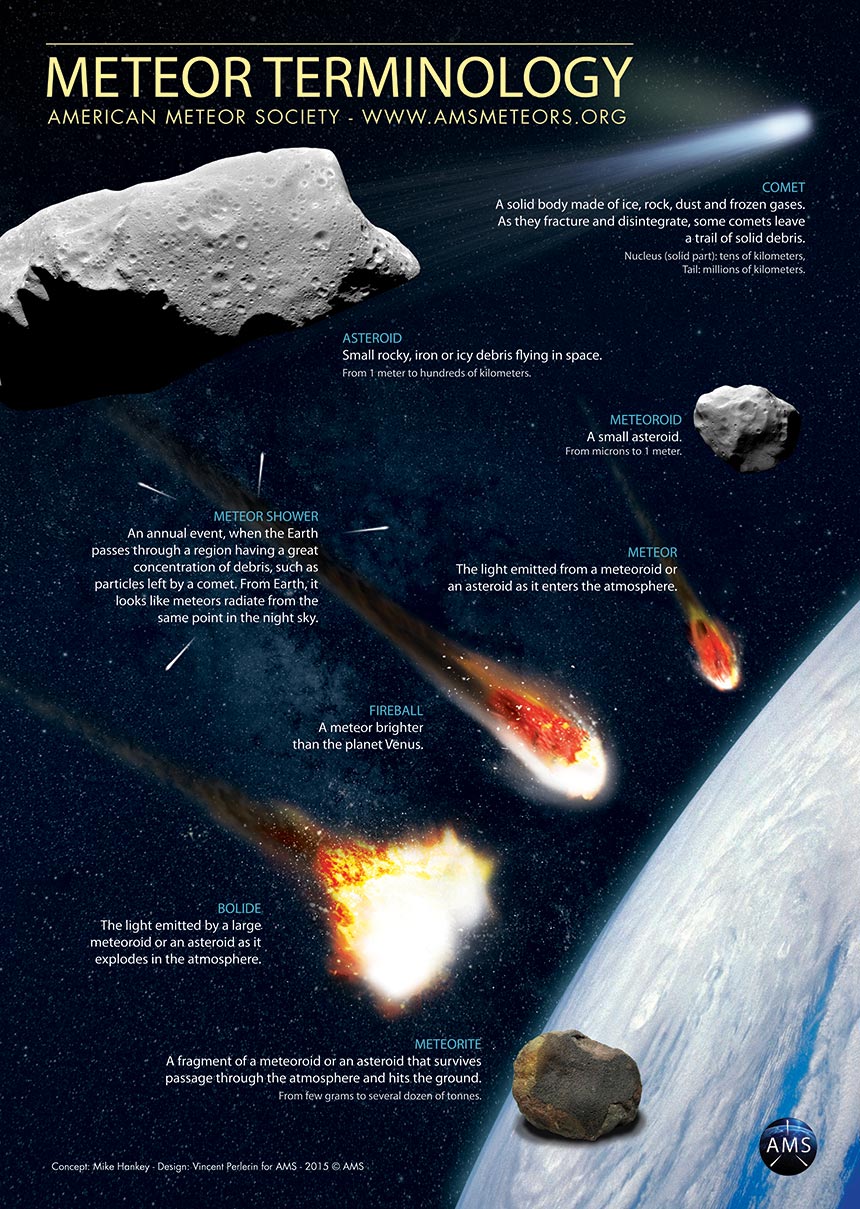


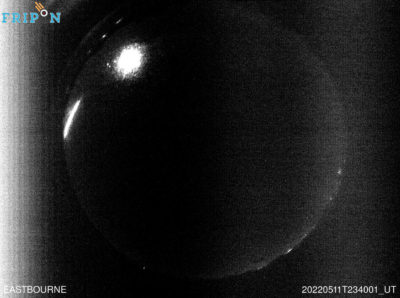
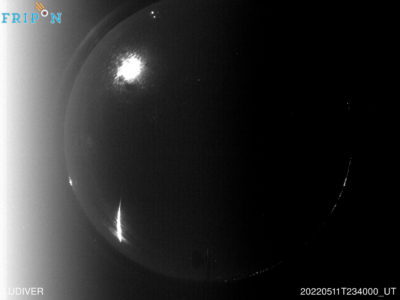
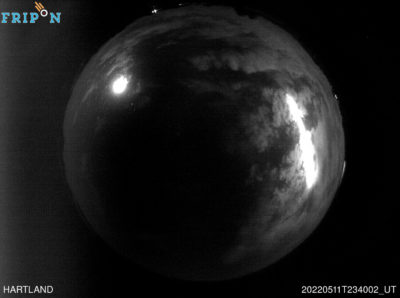


 You saw something bright and fast? Like a huge shooting star? Report it: it may be a fireball.
You saw something bright and fast? Like a huge shooting star? Report it: it may be a fireball.  You counted meteors last night? Share your results with us!
You counted meteors last night? Share your results with us!  You took a photo of a meteor or fireball? You have a screenshot of your cam? Share it with us!
You took a photo of a meteor or fireball? You have a screenshot of your cam? Share it with us!  You caught a meteor or fireball on video? Share your video with us!
You caught a meteor or fireball on video? Share your video with us!
One comment
Hi Robert,
My wife, Deborah Carter, who is an avid amateur astronomer, was at Abu Camp in the Okavango Delta in Botswana on the night of May 15th, when she and others saw a bolide at 17:47 UT, a bit smaller than the Full Moon but brighter, lit up whole sky. Came straight down from 60˚ altitude. Burst and continued falling (possibly a second fragment). They lost sight of it in the trees. The fireball was red and green, before it burst with a flash, before it descended again, again with color. Azimuth 330˚. Then minute or so later they heard a thunderous sound.